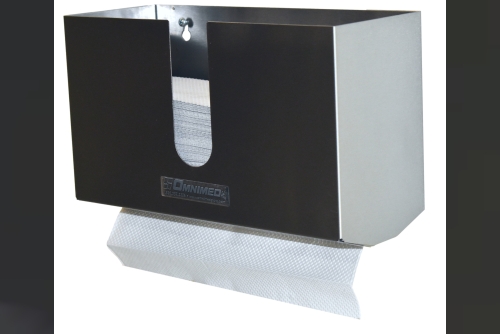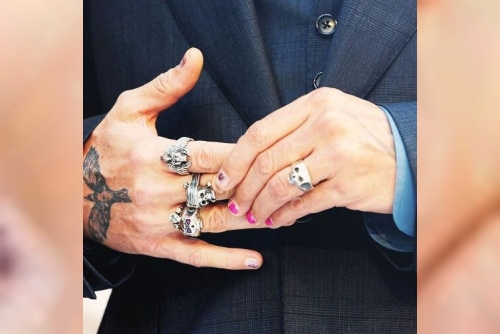Uterine fibroids are common, non-cancerous growths that develop in the walls of the uterus, affecting women of reproductive age. While many women experience little to no symptoms, others face a variety of complications such as heavy menstrual bleeding, pelvic pain, frequent urination, and infertility. When these symptoms become severe, seeking the best treatment for fibroids is essential to reclaiming your quality of life.
This article explores various treatment options, including non-invasive and surgical treatments, to help you make an informed decision on the best treatment for fibroids based on your needs and medical history.
What Are Uterine Fibroids?
Uterine fibroids, also known as leiomyomas, can vary in size, from tiny growths to large masses that distort the shape of the uterus. These tumors develop from the smooth muscle tissue of the uterus and can grow inside the uterine cavity, within the muscular wall, or on the outside of the uterus. Fibroids can be classified into different types, including intramural (within the uterine wall), subserosal (on the outer wall), and submucosal (beneath the uterine lining).
While the exact cause of fibroids remains unknown, they are believed to be influenced by hormonal factors, particularly estrogen and progesterone, as well as genetics. Women with a family history of fibroids are more likely to develop them.
Symptoms of Fibroids
Not all fibroids cause symptoms, but when they do, they can significantly impact a woman’s health and daily life. Some common symptoms include:
Heavy menstrual bleeding or prolonged periods
Pelvic pain or pressure
Frequent urination or difficulty emptying the bladder
Pain during sexual intercourse
Lower back pain
Reproductive issues such as infertility or miscarriage
If you are experiencing any of these symptoms, seeking the best treatment for fibroids can help manage or alleviate these discomforts and improve your quality of life.
Treatment Options for Fibroids
When it comes to the best treatment for fibroids, there are several options available, ranging from conservative approaches to more advanced surgical procedures. The choice of treatment depends on various factors, including the size and location of the fibroids, the severity of symptoms, your age, whether you wish to preserve fertility, and overall health.
Watchful Waiting
In some cases, fibroids do not cause significant symptoms and may not require immediate treatment. If fibroids are small and not causing major issues, doctors may recommend "watchful waiting," where the condition is monitored with regular check-ups. This approach may be suitable for women nearing menopause, as fibroids often shrink after menopause due to lower hormone levels.
Medications
Several medications can help manage fibroid symptoms. These include:
Hormonal treatments: Birth control pills, hormonal IUDs, or GnRH agonists (which temporarily shrink fibroids) can help reduce bleeding and pelvic pain.
Nonsteroidal anti-inflammatory drugs (NSAIDs): Pain relievers like ibuprofen can help alleviate pain and discomfort caused by fibroids.
Tranexamic acid: This medication can help reduce heavy menstrual bleeding by preventing clot breakdown.
While medications can help manage symptoms, they do not eliminate fibroids and may not be effective for larger fibroids or those causing severe pain.
Uterine Fibroid Embolization (UFE)
Uterine Fibroid Embolization (UFE) is a non-surgical procedure that has gained popularity as one of the best treatment options for fibroids. UFE is a minimally invasive procedure that blocks the blood supply to fibroids, causing them to shrink and die.
During UFE, a catheter is inserted into the femoral artery, and tiny particles are injected into the blood vessels that feed the fibroids. This procedure typically takes about one to two hours and can be performed on an outpatient basis with a short recovery time. UFE is an excellent choice for women who want to avoid traditional surgery and preserve their uterus, as it can significantly reduce or eliminate fibroid symptoms.
Myomectomy is a surgical procedure that removes fibroids while preserving the uterus. It can be performed through various approaches, including abdominal, laparoscopic (minimally invasive), or hysteroscopic surgery, depending on the size, location, and number of fibroids. Myomectomy is often recommended for women who want to maintain their fertility and avoid hysterectomy.
While myomectomy can effectively remove fibroids and alleviate symptoms, there is a risk of fibroids returning over time. Recovery can take several weeks, and there may be a higher chance of complications compared to non-invasive procedures like UFE.
For women who no longer wish to preserve their fertility and have large or multiple fibroids, a hysterectomy may be the best treatment for fibroids. A hysterectomy involves the complete removal of the uterus, and in some cases, the ovaries and fallopian tubes. This procedure offers a permanent solution to fibroids and eliminates the risk of recurrence.
While hysterectomy is a highly effective treatment, it is also the most invasive option and requires significant recovery time. It is typically considered when other treatments have not worked, or when fibroids are causing severe symptoms that affect a woman's overall health.
MRI-Guided Focused Ultrasound (MRgFUS)
MRI-guided Focused Ultrasound is a non-invasive procedure that uses high-frequency ultrasound waves to target and destroy fibroid tissue. It is guided by magnetic resonance imaging (MRI) to ensure precise targeting. This procedure is an excellent option for women with small to medium-sized fibroids and those who are looking for an alternative to traditional surgery.
MRgFUS is an outpatient procedure with minimal recovery time. However, it is not suitable for all types of fibroids, and its availability may be limited in some regions.
Choosing the Best Treatment for Fibroids
When determining the best treatment for fibroids, it’s important to consider several factors, including:
Symptom severity: How much are fibroids affecting your quality of life?
Fibroid size and location: Certain treatments may be more effective depending on these factors.
Reproductive plans: If you want to maintain fertility, certain treatments, like myomectomy or UFE, may be more suitable.
Health conditions: Some treatments may not be appropriate if you have other health concerns, such as heart disease or diabetes.
Recovery time: Consider how much time you can afford to take off work or other responsibilities for recovery.
Consulting with a fibroid specialist is key to determining the best treatment plan for your individual circumstances. A skilled specialist will help you evaluate all your options and choose the solution that best fits your lifestyle, health, and future goals.
Conclusion
Uterine fibroids are a common condition that can significantly affect a woman’s health and well-being. The best treatment for fibroids will depend on a variety of factors, including the severity of symptoms, the size and location of the fibroids, and whether the woman wishes to preserve fertility. Options range from medication and non-invasive procedures like UFE to more invasive surgeries like myomectomy and hysterectomy. It’s essential to work closely with a fibroid specialist to determine the best course of action for your health. With the right treatment, you can find relief from fibroid symptoms and improve your quality of life.












